Most readers of this blog know I wear two hats. I write this blog — a labor of love — but I’m also the co-founder and CTO of a marketing software company, ion interactive. However, I rarely write about my company here, because (a) I prefer to use this space to explore bigger themes in our industry, and (b) I assume that you’re here for those bigger themes too.
So over six years of writing this blog, with hundreds of posts, you can count on one hand — even if you’re missing a finger or two — the number of chiefmartec.com posts that talk about what we’re doing at ion interactive. They’ve been rare exceptions when I felt that what was happening with our company truly reflected a bigger industry theme.
This post is one of those rare exceptions. And it’s a big one.
Last month, we announced we were pivoting our company to focus on the emerging space of “marketing apps.” Even if you aren’t a customer of ours, and never become one, you’re going to want to understand what marketing apps are and why we made this move.
The short version: as part of marketing’s evolution from communications to experiences, marketing will increasingly be about building “apps” — lightweight, interactive web and mobile touchpoints that have functionality, logic, and flow.
Instead of flooding audiences with more and more static content to be passively consumed, we will provide them with “microservices” that help them acquire the information they want in more effective and engaging ways. Think microservices instead of microsites.
Marketing apps can be things like wizards, configurators, calculators, assessment tools, contests, interactive white papers, games, quizzes, surveys, guided tours, portals, social hubs, diagnostics, workbooks, galleries, utilities, sweepstakes, learning exercises — any kind of digital experience that actively engages prospects in a helpful or entertaining way.
There are five reasons why I believe a massive wave of marketing apps is coming:
- The cacophony of content has become deafening — it’s asymptotically impossible to break through the noise with one more white paper, infographic, webinar, or ebook.
- The burden on prospects to absorb all that passive content has become too heavy.
- Fill-out-a-form-to-get-an-asset lead generation tactics have become stale — and due to way too much shlock on the other side of submit buttons, prospects are increasingly skeptical of taking the bait.
- The value of data from expressed behavioral characteristics of prospects — to feed internal analytics and external personalization — strongly incentivizes marketers to pursue genuine engagement over artificial conversion.
- The shift in the buyer’s journey, away from dialogues with salespeople to more self-service research and evaluation in digital channels, now puts the onus on marketing to provide more consultative and useful interactions. There’s a widening gap here today.
We can address these challenges by advancing from an oversimplified content-oriented worldview to a richer service-oriented worldview with marketing apps. I propose that is actually the next wave of content marketing.
The 4th Wave of Content Marketing
Content marketing has become the heart of modern marketing. In the age of search and social, information is more valuable than advertising in connecting with prospects and building relationships along the buyer’s journey.
Of course, that assumes (1) that people can find your information, (2) that they are intrigued to consume it, and (3) that they will absorb it in a way that positively affects their propensity to buy and their lifetime value as a customer.
Those constraints have turned content marketing into an arms race.
In the first wave of that race, everyone simply published text-based content to the web. The focus was predominantly on search engine optimization (SEO), vying to have pages highly ranked by the Almighty Google on different keyword phrases. Early adopters won a first mover advantage with these techniques, securing prized “first page positions” in search engine results. But as more and more companies published more and more pages — often geared more towards search indexing bots than human beings — the efficacy of these tactics declined.
The second wave was a Renaissance of Creativity, as rich content overtook plain text — videos, infographics, custom illustrations, slide decks, better typography, beautifully designed ebooks, hi-res photography, CSS3 and HTML5 visual effects, etc. While the emotional impact of this content wasn’t as perceptible to search engines, it resonated far more powerfully with real people. Rich content won distribution by impressing people enough that they would share it socially on Twitter, Facebook, Pinterest, Google+, and so on.
At first, such rich content was extremely effective — because it popped like a volcano out of a sea of endless text. But then everybody piled on, cranking out infographics and colorful “definitive guides” with wild abandon. Average quality dropped. Now, even an asset that is well produced is often doomed to a momentary blip in social activity before a dozen new pieces of competitive content devour its earned attention like ravenous piranha.
The burden of this flood of content, however, is perhaps most viscerally felt by prospects and customers. There’s just too much to consume! It takes time and effort to read an ebook and to try to make sense of it in your own context. Every week, dozens of new reports, white papers, articles, webinars, blog posts, and newsletters fly at prospects. Just perusing them takes time. A prospect can only distill a tiny fraction into knowledge and learning that is absorbed and retained — and it’s hard work.
It’s like showing up for your first day of school, and the teacher locks you in the library with ten thousand books and says, “Good luck, kid — there’ll be a final exam in 8 months.”
The third wave of content marketing, which aims to algorithmically filter this deluge into a drinkable glass of water, is personalization. By looking at historical correlations between characteristics of your different prospects and characteristics of your catalog of content, personalization software can predict which specific pieces of content are “best” to serve up to any new prospect. You automatically winnow the right content for your audience.
At least that’s the theory. There are four fairly big caveats to personalization though:
- You need enough data about new prospects to meaningfully make an inference about which content is right for them.
- When you create new content, you need to either (a) manually guess how it maps to prospect characteristics; (b) have software try to infer that mapping, although with creative assets, the accuracy of that can be dubious; or (c) expose a large sample of all kinds of prospects to it to experimentally learn with whom and how well it resonates.
- As things change in your market — your products and positioning, your customers’ preferences and expectations, your competitors’ moves — the relevance of your data from past prospects and previous pieces of content (and therefore the accuracy of predictions you make with it) deteriorates with time.
- Even in the best circumstances, a prediction is still just a probabilistic guess — if you have an algorithm that is 80% accurate, which would be amazing, it still means that for 1 out of 5 prospects, you’re going to guess wrong. What’s your recovery?
You’re that poor school kid locked in the library. A kindly librarian shuffles over and says, “Ah, you’re wearing a blue shirt. Another student who wore a blue shirt two years ago only read these 12 books. So I think they should get you through the exam…”
While personalization can be a powerful tool in content marketing — especially when it’s applied to create pleasant surprises of serendipity — it’s not a panacea.
Now, I believe we’re on the cusp of a fourth wave of content marketing, a more interactive approach to matching the right content to the right prospects and making that content more engaging to consume — a new era of marketing apps. But before we discuss the theory driving this fourth wave, let’s look at a real example of a marketing app…
The Anatomy of a Marketing App
Let’s dissect a real marketing app to understand how it works. The following is an annotated walk-through of an actual marketing app that my company uses in our own marketing — a quiz-like game to get prospects intrigued about the potential of creative A/B testing:
Want to try this app yourself? Click here to take the quiz.
Compare and contrast this with traditional content marketing tactics. We might have offered visitors a white paper or a case study ebook about A/B testing and asked them to fill out a lead generation form before giving it to them. It could have been a great paper or ebook, beautifully designed, but most wouldn’t have bothered to fill out the form — and therefore would have received no meaningful impression of our brand and no sample of our value proposition.
Even those who did “convert” to download such an asset — a pretty weak interpretation of conversion when you think about it — many would only give it a quick glance. They wouldn’t absorb the information. They’d get too busy with other things competing for their attention to really study the document and learn from it.
The interactive marketing app version of this content, however, has three big advantages:
- Gets more people meaningfully engaged with our brand, immediately.
- Communicates our ideas in a memorable way that is easier and faster to absorb.
- Ultimately generates more — and more enthusiastic — leads for us.
This is just one example of many, many different kinds of marketing apps that you can employ. So let’s step back again and consider what makes marketing apps like this so effective.
Inspiration for Marketing: Great Teachers and Salespeople
We know that more responsibility of the buyer’s journey is shifting from sales to marketing, as prospects increasingly use digital channels to research and evaluate purchases on their own before they ever want to hear from a salesperson.
We also know that a lot of our responsibility comes down to educating prospects. I don’t mean “educating” as in old school “fluff and FUD to persuade them we’re best” — I mean legitimately helping them understand the subject that they’re interested in, by sharing valuable knowledge and experience. Such education is our goal with really great content marketing. That’s how we build trust and brand loyalty.
We know these two things are true.
Yet ironically, for all the innovation we’ve seen in marketing in recent years, there are two sources of inspiration for better digital marketing that have been relatively untapped:
- The ways in which really great salespeople build rapport with prospects.
- The ways in which really great teachers educate their students.
Great salespeople have real dialogues with their prospects. They don’t just blindly spew material at people. They ask questions. Then they ask more questions. And then, maybe, as they start to understand the real needs of the customer, they provide relevant information that will help move the buyer forward. They are wary of making quick assumptions. They don’t guess. They ask. They give prospects choices and pay close attention to which ones they select. They interactively discuss useful configurations and calculations.
Great teachers engage students with interactive learning. There has been tremendous progress in modern education, from decades of research, that recognizes the benefits of active, experiential learning over purely passive, didactic learning. Great teachers don’t just drop a pile of books on a student’s desk or make them sit through hours of droning lectures. They incorporate constructivist learning techniques, in the right doses, to make the material they’re teaching come alive in the minds of their students.
Great salespeople and great teachers are the inspiration behind marketing apps. We can create interactive content that flows more like a sales dialogue than a marketing monologue and that teaches through active learning experiences.
Innovation at the Intersection of Media, Messages, and Mechanisms
We can combine that inspiration with the incredible creative freedom that the digital environment gives us.
The image at the top of this post, shown on a smaller scale to the right, illustrates that most marketing innovation has revolved around the interplay between messages (what we say) and media (where and how our messages appear). The classic phrase “the medium is the message” sums up that intersection.
But there is an important third pillar to this model: mechanisms (how it behaves). In traditional TV, print, and radio — purely passive media — there were few options for mechanisms (other than change the channel or flip the page).
Digital media, however, has nearly unlimited possibilities for interactive mechanisms. That’s why this whole field was called “interactive” when it got started. Yet for most digital marketing, we’ve been stuck in a rut with a handful of mechanisms: click a link, navigate a menu, fill out a form, press a submit button.
The most imaginative mechanism that has revolutionized marketing in the past several years has been “sharing” — giving our visitors the ability to easily distribute our content, with their own commentary, across social networks such as Facebook and Twitter. That was a phenomenal innovation in marketing mechanisms.
But there’s so much more that’s possible yet.
Smartphone apps have illuminated those possibilities — and raised expectations that digital touchpoints could offer functional benefits to prospects and customers. But the explosion of new customer engagement mechanisms that have been pioneered by such apps don’t have to be limited to iOS and Android. The same concepts can be applied to responsive web apps that are universally accessible. As noted in Accenture’s latest report on major technology trends in 2014, From Digitally Disrupted to Digital Disrupter:
In the consumer world, application development has become the province of a new generation of developers eager to strike gold by creating the next Angry Birds or Evernote app for the mobile phone — applications that are smaller and simpler to use. That development approach is now moving into the enterprise, creating new applications for mobile, Web, and desktop platforms alike. The more quickly businesses can create and launch new applications in today’s turbulent markets, the better they can innovate, collaborate, improve customer experiences, and enrich personal interactions.
The state of front-end web technology has advanced tremendously, just in the past couple of years, and makes it technically feasible to create incredibly rich, interactive web apps that look and feel and act like native apps. But these responsive web apps have a number of advantages:
- No need for users to install anything — downloading a smartphone app is, frankly, like a “firewall” to engagement: you must overcome issues with trust and clutter that cause users to resist installing a native app. Responsive web apps can be seamlessly inserted anywhere into the buyer’s journey without any barriers of permission.
- Universal accessibility on any device — responsive web apps work across phones, tablets, laptops. The same app works everywhere — no need to deal with different versions for iOS vs. Android.
- Deploy different apps for different circumstances — you don’t have to boil everything down to one app. You can create as many different apps as you like to target different needs for different audiences at different stages of the buyer’s journey.
- 100% control over the publishing process — you don’t need AppStore approval to deploy a responsive web app into the world. No expensive time delays or bottlenecks with those processes. Publish an app whenever you want. And remove it from the market whenever you want too (there’s nothing for users to uninstall).
The opportunities for innovation with responsive web marketing apps — this creative intersection of media, messages, and mechanisms — are tantalizing. But how do you build and deploy them? That leads me into what we’re doing at my company…
Our pivot to be the world’s best marketing apps platform
Everything I’ve described up to this point is not specific my company. (Okay, I used an example of a marketing app from my company, but that’s just because it was handy and, I humbly think, kind of cool.)
Marketing apps are emerging across the industry. In fact, in my latest marketing technology landscape, I highlighted a whole cluster of “marketing apps” vendors.
Technically, you don’t need a vendor to build a marketing app. In its bones, it’s just a web development project. You could have your IT department or your agency build one from scratch for you. But it takes a while to build them from scratch. You have to wait until developer resources are available. It can be expensive if you’re hiring an outside provider to build it. You get bogged down into issues of hosting it, maintaining it, dealing with change requests that come up three months later, etc.
In other words, one of the things that has held back development of bespoke marketing apps is that their cost has often exceeded their perceived benefit.
But a growing number of software-as-a-service (SaaS) vendors are changing the economics of marketing apps — making them much more accessible to more marketing teams with fewer resources required.
There are SaaS products for very specific marketing apps. For instance, if you want to run a poll with your prospects — which is a kind of marketing app, albeit a simple and cliché one — you can use SurveyMonkey or Polldaddy. If you want to run a sweepstakes app, you might sign up with Kontest or Rafflecopter. Increasingly, many of these vendors are expanding their repertoires to offer “a collection of marketing apps in one box” — such as SnapApp, Wishpond, and Woobox.
I have a lot of respect for these competitors. Our vision, however, is quite different.
We believe that the real potential of marketing apps isn’t pre-canned polls, quizzes, or contests. The bigger opportunity is to give marketers the power to create highly customized marketing apps that are hand-tailored dialogues and teaching experiences unique to their business and audience.
To enable this, we’ve developed a web-based marketing app studio that lets non-technical marketers design and deploy almost any kind of lightweight marketing app by assembling multi-step “flows” of rich web content that are governed by simple rules. It’s a way to let non-programmers “program” a wide variety of interactive digital experiences — combining the creative freedom of a responsive web design environment with the functionality of a logic engine and a toolkit of functional app components.
It’s the marketing apps equivalent of a Lego set (with a bunch of ready-made designs to get you started).
We were uniquely positioned to develop this product because we’ve spent the past seven years providing “flow”-oriented software for producing advanced, multi-step landing pages. This was a natural evolution of our platform — but a revolutionary way of rethinking what marketers can do with it.
I’d love to tell you more about our platform, of course, but you can visit ion interactive for more details. As I mentioned at the beginning of this post, I appreciate that you’re here for ideas that are bigger than any one company.
I believe marketing apps are a very big idea — a key part of marketing’s progression from being in the business of communications to being in the business of customer experiences.
We’ve bet our whole company on it.
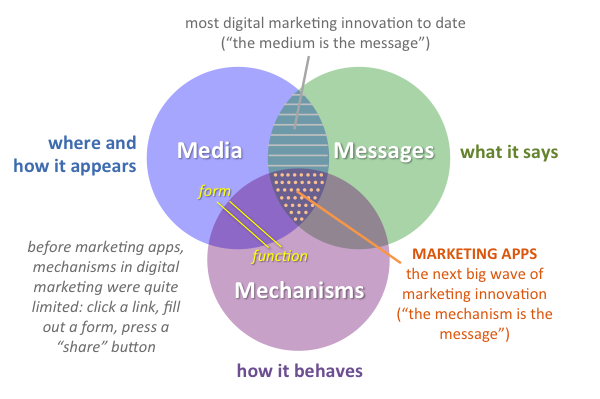



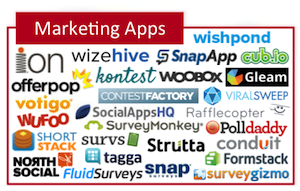
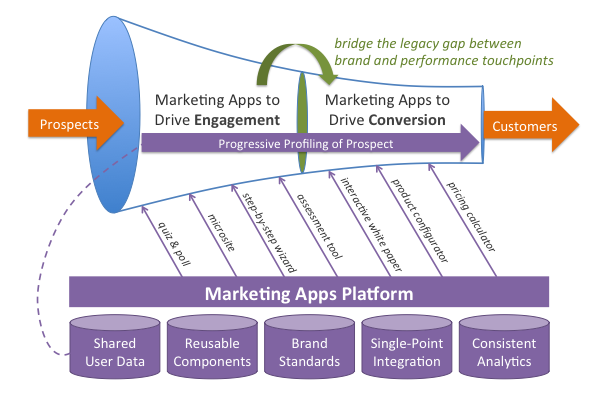
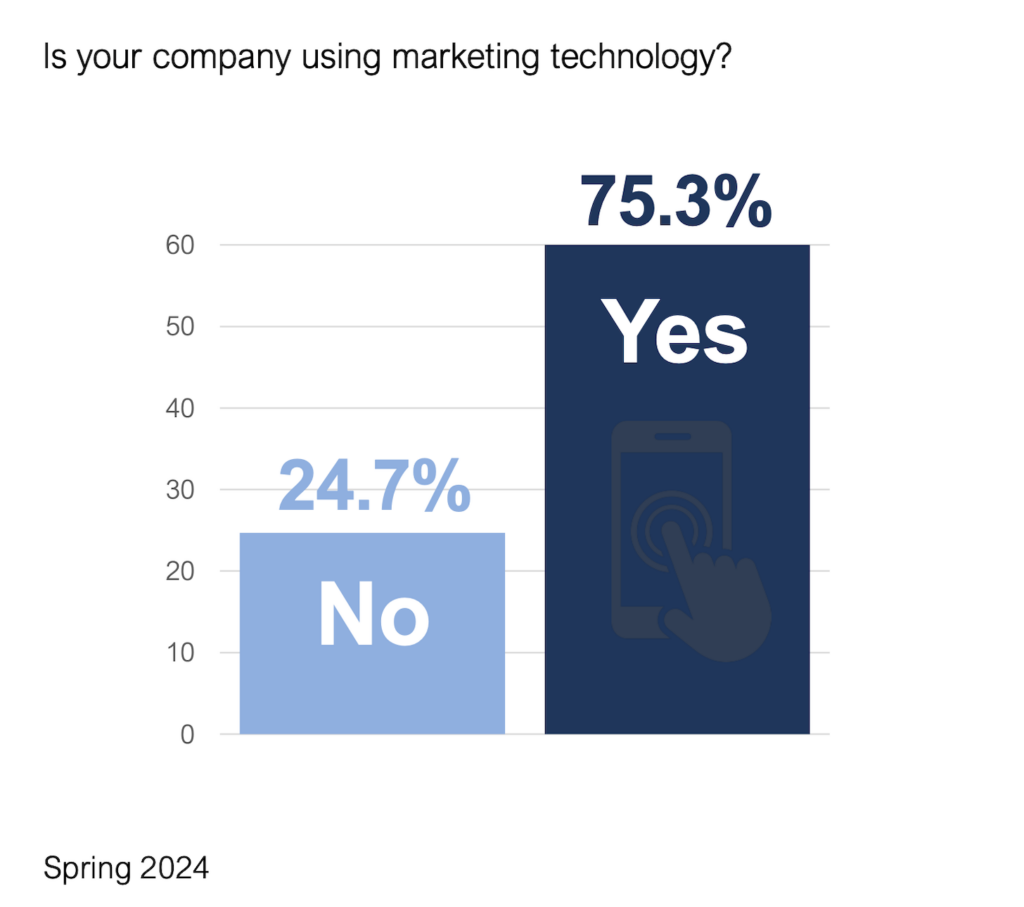
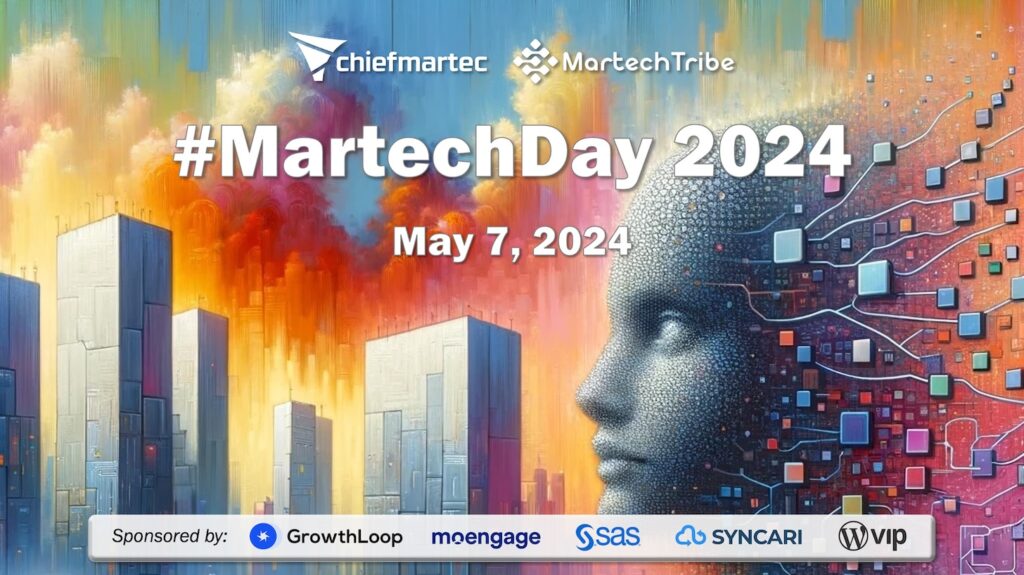
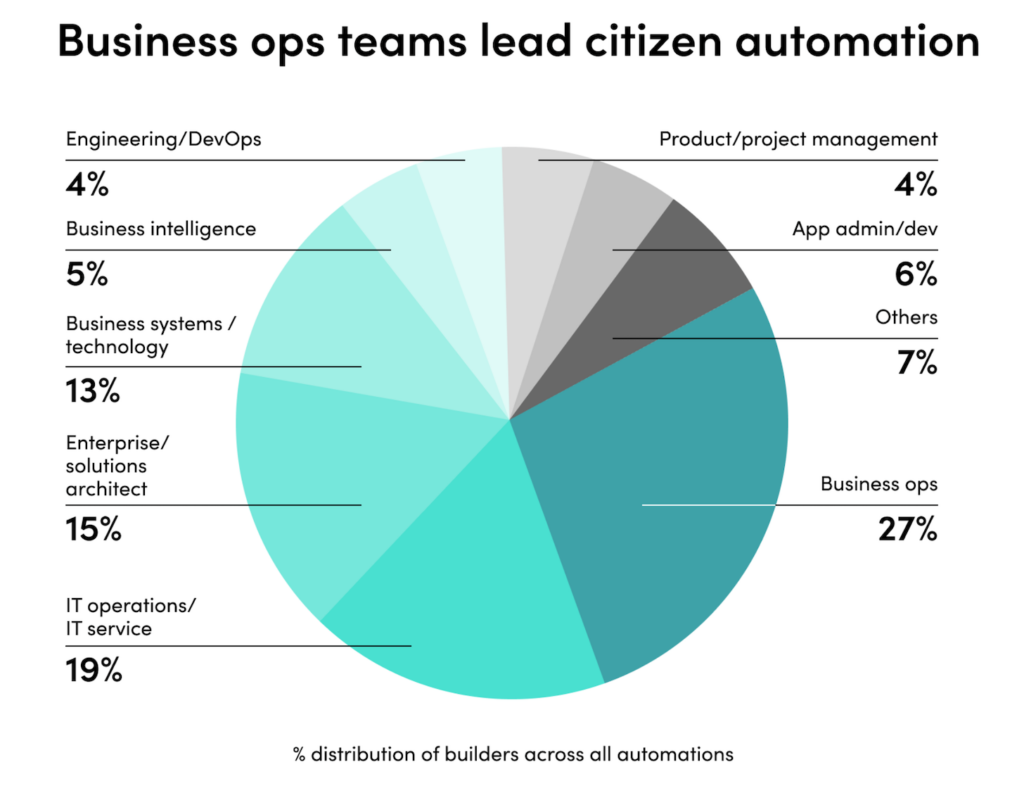
Scott…
Congratulations – a big pivot and certainly an intriguing model to say the least. And – it goes right in line with your MarTech conference coming up. You’re telling a different story my friend – and it’s showing.
Thanks, Robert. We’re pretty excited about where things are headed — not only for our firm, but for continuing evolution of marketing. It just keeps getting more interesting by the day.
Scott–This is a fascinating model! A lot of people talk about the marketing imperative to invite customers into interactive, personalized experiences. The reality is quite different. Your illustration in this article of how marketing applications can actually deliver on this promise is really exciting.
Tremendous work! There is a “cacaphony of content” indeed. Great distillation of the state of the digital marketing world and how an evolution of how we think about it can help us add more value.
Thanks! It is fascinating to watch (and hopefully play a small part in) this evolution.
Scott: to use an old ad slogan, you’re like the E.Fl Huton of MarTech. When you speak, people listen! Thanks for telegraphing the next moves in marketing. Congratulations
Thanks, David! I’m always pleased and grateful to hear that the themes and ideas that I delve into here resonate with others. It is a wonderful time to be working in marketing.
Congrats Scott, and all the best!
Thank you!
Hi Scott: Your blog is the only one that stops me in my inbox tracks. A great article. Good luck with the pivot. I’m wondering if the lightweight marketing app might be a better alternative to the free trial / download. How many times have we grabbed the freebie only to spend 5 minutes staring at a daunting install and/or rampup process then abandoned and forgot about it.
Thanks, Glenn — really happy to hear that you find these posts helpful! Especially given all the content that comes into inboxes these days. 🙂
Yes, I think one of the exciting things about marketing apps is that they get away from “all or nothing” conversion offers. You can start to get people engaged with your content without any gate, and then after you’ve demonstrated value to them, you can then move to a more tailored conversion offer.
And to think of the quality of analytics you can get from an app compared to a download. I can see it now – split testing App steps. One problem I can forsee is distinguishing your app startup from the spammy sweepstakes type links you sometimes get tricked into clicking on at less reputable sites.
.
Agreed on both counts.
The data you can glean from people’s interactions with these apps can be incredibly helpful in understanding what prospects are interested in and what their current opinions and understanding of your domain are — really rich, behavioral data that can feed meaningful segmentation and more personalized nurturing and sales follow-up.
Of course, just like any kind of content marketing, there will high-quality marketing apps that people really appreciate and low-quality “spammy” apps that benefit no one (especially the marketers who deploy them under the terrible misunderstanding that direct response and brand marketing are somehow still unrelated). The good news, however, is that these responsive web marketing apps don’t have to (and usually shouldn’t!) have a gate in front of them (e.g., fill out this form to get started or install this native app on your phone); you’ll be able to get a sense of the quality of an app by interacting with it BEFORE having to make a commitment.
Scott, while I definitely agree with the advantages you list for marketing app content, I would also include “Time savings for the prospect” as a key advantage. To illustrate, I followed your link and took the test. The whole process (including signing up for the detailed results) took no more than a few minutes. This is much less time than reading a white paper with a more meaningful experience.
Great demonstration of the power of apps!
Yes! Completely agree. The content — if we consider marketing apps to be interactive content — that gives the most value to prospects in the least amount of time, in the most engaging way, wins. 🙂
Thanks for taking the quiz app for a spin!
Very cool approach to the stale “landing page w/ white paper” approach. I saw your platform in action at the Marketo Summit and was very impressed and excited.
Thanks, Grant — really happy to hear that you like what you’ve seen!
Fascinating to read and excited to watch this play out. I was initially confused by how you define “app”. I work for a mobile app platform that builds native apps. We work to educate customers, sales people, and our industry the difference between mobile websites [responsive or not] and apps. That’s partly due to our industry and the different use cases between the two.
I say this not to be a d-bag, but to point out my own nit-picky perspective. Ask me to check out a company’s single purpose “app” and I will decline. My perception is that I have to go download it, use it, then delete it. I would happily visit a responsive website to try my luck at an A/B testing game.
Ultimately I realize the definition doesn’t matter, it’s how people respond to this next step, and I look forward to it.
You know, that’s the one thing that made me hesitate in calling these things “marketing apps” — confusion with overloading the “app” term. Other things being equal, it’s preferable to be able to classify things distinctly with unique short names.
However, for better and worse, the “app” term does seem to have migrated into a large number of other contexts other than just native platforms. People seem to intuitively get the right association: that it’s a lightweight piece of software — often with a single, simple purpose. So I’ve capitulated to a broad interpretation of the word “app” myself, although I do try to note that the things we’re doing at ion interactive are “responsive web apps”.
Not ideal, I know. But as you said, it’s really all about the user experience in the end, and the labels that we use internally for these things are, in the end, just a name.
Labels aside though, I’m really glad you like the idea!
Scott,
This article is intriguing on so many levels: content marketing, personalization, automation, customer journey, martech . . . I’m going to read it a few more times to fully digest the ideas, but wanted to say I think it’s brilliant, and I’m excited to see what comes next for ion.
Thanks, Paul — I really appreciate that. As one of the pioneers of content marketing, I’ll be very interested in hearing more of your thoughts on this after digestion. 🙂
Thanks for a great, insightful and inspiring post, Scott! I do wonder – what about the visibility and/or distribution of marketing apps? What would be the best practices? Social, search, ads, marketing automation, embedding, deep-linking, etc.? Or is there a new change wave coming here also?
Thanks, Morten.
In the short run, I believe we’ll simply see marketing apps proliferate through existing channels — embedded in websites and landing pages, or in some cases, substituting for landing pages in what happens after a click in advertising, search, social, email, etc. One of the advantages of responsive web marketing apps is that they can pretty much go anywhere that passive web content appears today.
Over time, however, I suspect we may see more novel “locations” for marketing apps. For instance, could helpful marketing apps replace annoying ads out in paid media? Interesting possibilities.
Go big or go home. I love it!
Thanks, Joe — appreciate the encouragement!
Scott- Great post as always, I love how you laid it out and as usual clear, concise, thinking. Since SnapApp has been doing this for years and is the market leader in enabling marketers to create massively customizable interactive content and dialogues we couldn’t agree more with this post. Here’s welcome Ion to the future- glad to have you.
Thanks, Seth. I have a lot of admiration for you and your team. Here’s to marketing apps as the 4th wave of content marketing and making marketing a better experience for everyone!
Scott – Your systemic view of things and the focus on connections is what distinguishes you. Great work, as usual. You’re one of very few out there that aren’t confusing the menu for the meal. All the best with the pivot.
Thank you for the kind words and best wishes, Mike — I’m really happy to hear that you enjoy these posts and find them useful.
Hi Scott,
I think you tackled a massive topic with this post, and have some very great insight, but I think the diagnosis is incomplete and disagree (partially) with your conclusion.
A couple of items that need to be considered in the diagnosis:
1. Mediums have changed: people are spending less time reading newspapers, watching tv, and browsing websites and more time using “feeds” (predominantly social) to get info and netflix, other on-demand, or “apps / games” for entertainment
2. This not only shifts our behaviour on how we consume content, but also changes how we market – as Jay Baer points out in Youtility, the notion of disruptive advertising becomes increasingly difficult when you have to compete with feeds from news, friends, family, and more
3. We’re definitely inundated with content, but two types of content STILL rise to the top: extraordinary (those funny cats… don’t they ever rest?!?) and genuinely helpful (helped me solve a specific problem).
Secondly, apps aren’t the solution (sorry).
Apps are like campaigns that can be effective but usually only once (like a campaign) to deliver content by combining personalization and shorter steps to get there. I think its a smart move for your company, and I think there is a ton of opportunity there – especially for complex products. But I think its still a small portion of the market, and does not address the problem completely.
For instance, you could have written this blog post in an app – in a “choose your own adventure” format that led the reader to the same conclusion. But it wouldn’t have been as good, as compelling, or as thorough. The fact that there is a lot of bad content shouldn’t and – I strongly argue – will not dissuade great writers and thinkers from writing long-form content.
And I suspect your readers agree.
Hi, Scott — thanks for the great comment!
Yes, you’re absolutely right that “passive” content isn’t going away. It will continue to be a huge portion of marketing production and media consumption. However, the competition for attention with such content is going to be fierce. Even good content is losing its efficacy as what used to be “15 weeks of fame” drops to “15 days of fame” and increasingly “15 minutes of fame.” Production is outpacing consumption in many markets.
But I agree with you that extraordinary and helpful content will fare much better than schlock. (Although the volume of schlock will probably continue to grow for the foreseeable future, which is a real noise pollution problem.)
I agree that marketing apps won’t be a panacea. Not unlike personalization technologies, marketing apps have a role to play — there will be contexts in which they’re ideal for better engaging, entertaining, and educating prospects (who won’t necessarily think of them as “apps” explicitly). I think they will help break through the noise in those contexts. But they won’t be the only form of content and they won’t be universally successful.
However, it is interesting to think of the overlap between the two: interactive ebooks, white papers, infographics, etc. — content assets that increasingly embed mechanisms for navigating, zooming in, and participating in a community around that content (e.g., as simple as embedding a poll in a white paper asking readers to weigh in with their opinions). I think there’s a lot of creative potential here.
And true, I did write this as a static blog post — but I linked people into an interactive app, which at least several folks noted did a much better job of demonstrating my point than my other 2,000 words.
Scot
Great, great post.
I do want to question one thing though: your diagram earlier about ‘the 4th wave’ of content, suggests that it is just a matter of up the curve, but I think there is a break in the curve (and you are jumping it)
Even with personalisation level of content marketing, it is still the marketer pushing stuff out. With apps you are drawing information (and creating value) through the participation of the customer.
I have never been a fan of content marketing (sorry Joe) and I have branded it as a case of personal fadism. ( http://www.linkedin.com/today/post/article/20140403213231-6878485-content-marketing-another-case-of-terminal-fadism)
I like what I am reading here though…
Great post. I just saw an app that helps marketers. You might want to incorporate it into your technology tools flitter.io
This post got me looking at your company and I’m happy to be involved in a sales cycle. That being said, when I asked your rep what category Ion Interactive was in, I was confused with “Marketing Apps”. I saw the potential, I see the amazing case studies. I went through the A/B test page results and knew I wanted to create exactly that type of experience for our customers: pure engagement, excitement for the results, and wanting to engage. But still, what do I tell my CEO “these are marketing apps”?
Wow, what a challenge to define Marketing Apps as a category where your vendor landscape has nearly 1,000 vendors and so many categories. I wish you the best of luck and will continue to look forward to your content, whether in this blog or in your marketing apps!
Brilliant Scott! – giving differentiation back to marketers who’ve unintentionally become like a massively cloned collection of Agent Smiths, (as in The Matrix movie), – and at the same time providing an incredibly helpful service to potential customers …
Clearly on to something (potentially huge) here – I’ve never thought about marketing apps before… now I I’m excited about the possibilities for clients 🙂
I think your pivot is bang on. Everyone, including marketers are drowning in content today and I think these apps will be very useful and welcomed. Many brands are doing this today or some form of it, but you’re right that the costs and time to implement can still be quite significant. I can see us using a platform like this for our clients. Great post Scott. Thanks!
You guys hit the nail on the head. I’ll be following this for sure.